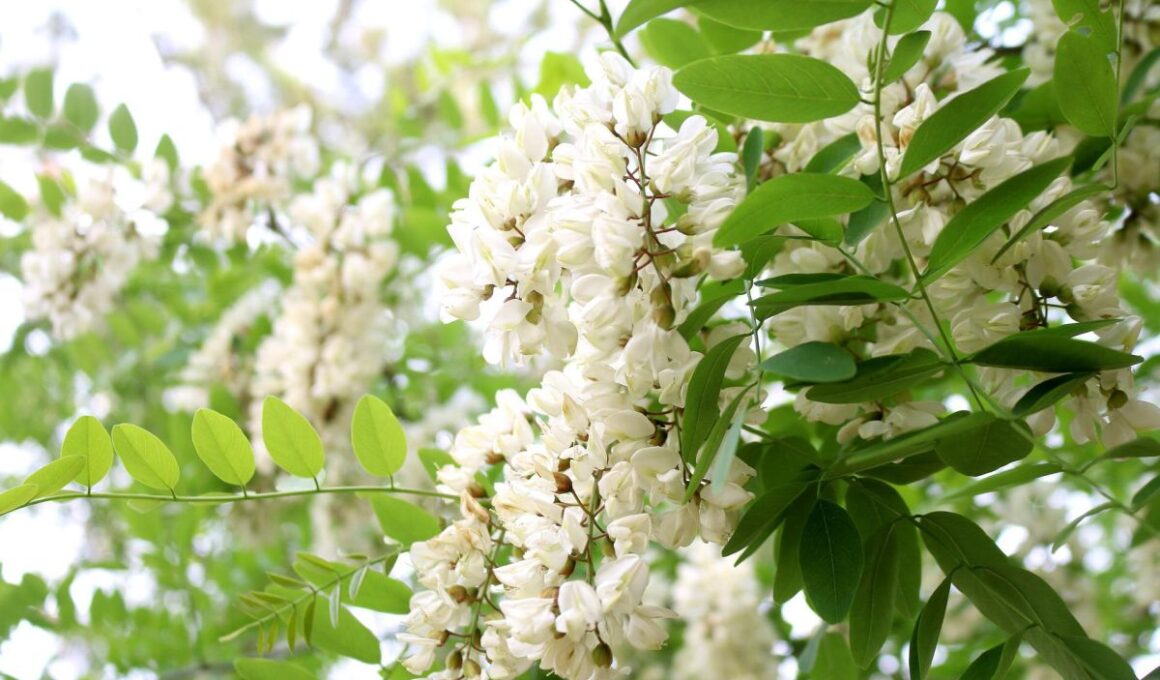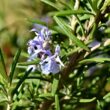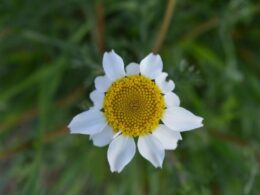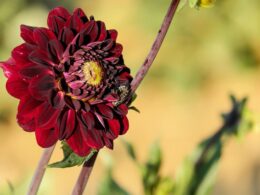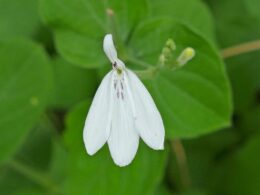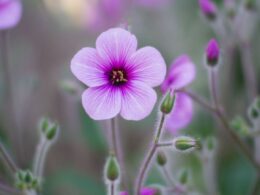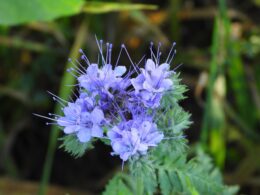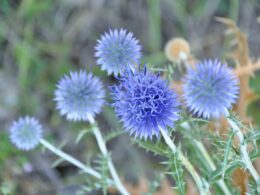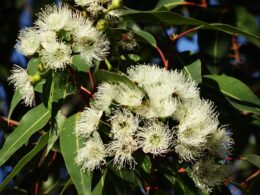In this guide, we’ll provide you with care tips for the acacia flower, as well as share some of our favorite species of this gorgeous bloom. Let’s get started!
Acacia Flower. General Information
Acacia, often known as wattles, is a large genus of trees and shrubs in the Fabaceae family. They are found throughout the world, especially in Africa, Australia, and Asia. Many non-Australian species of acacia flowers tend to have thorns.
The flowers of most species are yellow, but a few have white or pink flowers. Acacia flowers are produced in capitula or short racemes, and generally have 5-25 petals. The bark of some species is used to make paper, while the wood of others is used for fuel or construction. Some acacia species are invasive, particularly in Australia and Hawaii.
Types of Acacia Trees and Shrubs
Acacia trees and shrubs are native to tropical and subtropical regions of the world. There are more than 1,000 different species of acacia, and they come in a wide variety of shapes and sizes. Some acacia species are shrubs or small trees, while others are towering trees that can reach heights of over 100 feet.
Acacia trees and shrubs are prized for their beautiful bright yellow or white flowers, which can also be pink or purple. The flowers are often followed by small pods that contain seeds. Acacia wood is also very valuable and is used in a variety of applications, including furniture and flooring. While acacia flowers are mostly found in warm climates, there are a few species that can tolerate cold temperatures.
Here are some of the most popular acacia flower varieties:
- Acacia dealbata (silver wattle) – this species is native to Australia and has long, slender leaves that are silver-green in color. The flowers are yellow, and the tree can grow to a height of 30 feet.
- Acacia longifolia – this species is native to southeastern Australia and has long, narrow leaves. The flowers are pale yellow.
- Acacia aneura – this species is native to outback areas of Australia and has long, narrow leaves that are silver-green in color. The flowers are yellow, and the tree can grow to a height of 30 feet.
Acacia Flower Guide. Planting, Soil & Sunlight Needs
Acacia flowers are beautiful, fragrant blooms that add a touch of elegance to any garden. They come in a variety of colors, including white, yellow, pink, and purple, and their sweet aroma is sure to please any nose. If you’re looking to add this plant to your garden, there are things you need to know first. Here is a quick guide to help you get started.
Acacia flowers need full sun to partial shade and well-drained soil. They are drought tolerant and do not like wet feet, so make sure your planting site is not in a low spot where water might collect. They are also relatively salt tolerant, so they can be a good choice for gardens near the coast.
When it comes to planting, acacia flowers do best when planted in the spring or fall. If you live in an area with a warm climate, you can plant them in the fall, and they will bloom in the spring. If you live in a colder climate, plant them in the spring, so they bloom in the summer.
Acacia Flower Guide. Watering, Fertilizing, Pruning
Acacia flowers are beautiful, unique blossoms that add a touch of elegance to any garden or landscaping. Although they are relatively easy to care for, there are a few things you need to know in order to keep your acacia flowers healthy and happy. With just a bit of knowledge and care, you can enjoy these lovely flowers for many years to come.
Watering
Acacia needs to be watered regularly, especially during the hot summer months. They prefer moist soil, so be sure to check the moisture level frequently and water accordingly. It is important not to over-water acacia flowers, as too much water can cause the roots to rot. When watering, be sure to direct the water at the base of the plant rather than directly onto the leaves.
Fertilizing
Acacia flowers benefit from being fertilized every few weeks during the growing season. Use a balanced fertilizer and apply it according to the package directions. Be sure not to over-fertilize, as this can burn the roots of the plant.
Pruning
Acacia will benefit from a light pruning after it has finished blooming. This will encourage new growth and help to keep the plant healthy. Simply trim off any dead or dying branches and leaves. Be careful not to over-prune, as this can damage the plant.
With just a bit of care, you can enjoy beautiful acacia flowers for many years to come. Be sure to water regularly, fertilize every few weeks, and prune after blooming to encourage new growth. With these simple tips, you can have healthy and happy acacia that will add a touch of elegance to your garden.
Do All Acacia Trees Have Flowers?
Yes, all types of acacia trees have flowers. The flowers of acacia trees are often small and inconspicuous, but they can be beautiful and fragrant. An acacia flower typically has five to twenty-five petals that are white, yellow, or pink in color.
What Does Acacia Flower Smell Like?
Acacia flowers have a sweet, delicate fragrance that is often described as being similar to honey. The flowers are small and white, and they grow in clusters. Each flower has five petals, and the center of the flower is filled with nectar. Acacia trees are native to Africa, Australia, and Asia, and they are often used as ornamental plants.
Now you know everything about the acacia plants and their yellow flowers. Thanks for reading!





